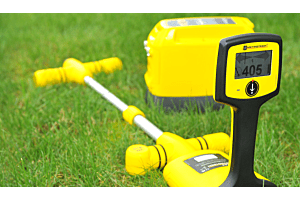
Excavation work, whether for construction, gardening, or utility installations, is fraught with risks. The ground beneath us is a complex web of utilities like electricity cables and gas pipes. Damaging these can result in severe consequences, including fatalities. This comprehensive guide aims to arm you with the knowledge and best practices to ensure your excavation work is as safe as possible.
The Gravity of Safe Excavation
Alarming Statistics
- An average of 70 people are seriously injured each year due to contact with underground electricity cables.
- Nearly half of these incidents occur in public spaces like highways, construction sites, and industrial buildings.
- The UK Power Networks also highlights that every year, people are killed or seriously injured when they come into contact with high voltage electricity.
New Research Highlights Rising Risks
According to a digging disasters report by the Energy Networks Association (ENA), nearly a third (31%) of construction workers fail to check for underground electricity cables when digging. This has led to a 20-30% increase in incidents across the UK. The report also states that incidents of cable strikes have increased by 46% since the national lockdown ended. These alarming statistics make it imperative for anyone involved in excavation work to exercise extreme caution.
ENA Think Before You Dig
The Three Pillars of Safe Excavation: Plan, Scan, Think
Plan Your Work Meticulously
Conduct a Comprehensive Risk Assessment
- Identify potential dangers and hazards.
- Use a standardised risk assessment form for documentation.
Request Utility Plans in Advance
- Contact utility companies for location details and plans.
- Confirm the exact location of all underground utilities to avoid damage.
Utilise Local Resources for Planning
- Consult your local electricity network operator for guidance.
- Use the Line search before U dig for instant access to utility plans.
Scan the Area Diligently
Employ Detection Tools
- Use Cable Detection Tools to scan the area.
- Rescan as your work progresses to ensure ongoing safety.
Be Alert to Warning Signs
- Look for meter and fuse boxes, electricity pillar boxes, and utility indicator markers.
- Pay attention to manhole covers and other surface-level indicators.
Hand-Dig Trial Holes
- Expose underground services by hand-digging trial holes.
- Use safe digging techniques to establish the line and depth of utilities.
Think Before You Dig
Adhere to Best Practices
- Follow guidelines from the Health and Safety Executive (HSE) and ENA’s ‘Watch Out, Cables About’.
- Consult the Utility Strike Avoidance website for additional information.
Assume Cables Are Live
- Treat all underground cables as if they are live.
- If you notice damage, contact your local electricity network operator immediately.
Emergency Protocols
- In emergencies involving electricity, dial 999.
- For non-emergency situations, use the designated numbers for Great Britain and Northern Ireland.
Search for Pipes and Cables Before You Dig
Safety Measures and Best Practices
Personal Protective Equipment (PPE)
Wearing the right PPE is crucial when engaging in any excavation work. This includes:
- Safety boots with steel toe caps
- High-visibility clothing
- Safety gloves
- Hard hats
- Eye protection
Communication is Key
Always ensure that all team members are aware of the safety protocols and emergency procedures. Regular safety briefings can be invaluable.
Environmental Considerations
Be mindful of the environmental impact of your excavation work. This includes:
- Proper disposal of waste material
- Minimising noise pollution
- Protecting local flora and fauna
Legal Requirements
Familiarise yourself with the legal requirements related to excavation work in your jurisdiction. This may include permits, notifications to local authorities, and other regulatory compliances.
Post-Excavation
Once the excavation work is completed, ensure that the site is restored to its original condition as much as possible. This includes:
- Filling in any holes or trenches
- Removing all equipment and waste
- Ensuring the site is safe for public access
Additional Resources
- For more in-depth guidelines, refer to the Proximity Wheel PDF by the Utility Strike Avoidance Group.
- Looking to keep costs down, you can check out our Refurbished cable locators.
Frequently Asked Questions (FAQs)
- What should I do if I accidentally hit an underground cable?
Immediately vacate the area and contact your local electricity network operator. Keep everyone clear of the site until it's declared safe.
- How accurate are utility plans?
Utility plans are a guide and may not be 100% accurate. Always use detection tools and hand-dig trial holes to confirm the location of utilities.
- Can I use mechanical tools for excavation?
Mechanical tools can be used, but only after you've confirmed the location of all underground utilities by hand-digging trial holes.
- What are the emergency numbers for electrical issues?
In Great Britain, the emergency number is 105. In Northern Ireland, it's 03457 643 643. In life-threatening situations, dial 999.
Conclusion
Safety is a collective responsibility. By meticulously planning, scanning, and thinking before you dig, you contribute to keeping Britain’s energy flowing safely.
Contact Information
For more details, contact your local electricity network operator. Use the postcode finder tool on the Energy Networks Association website to find your operator.






Login and Registration Form